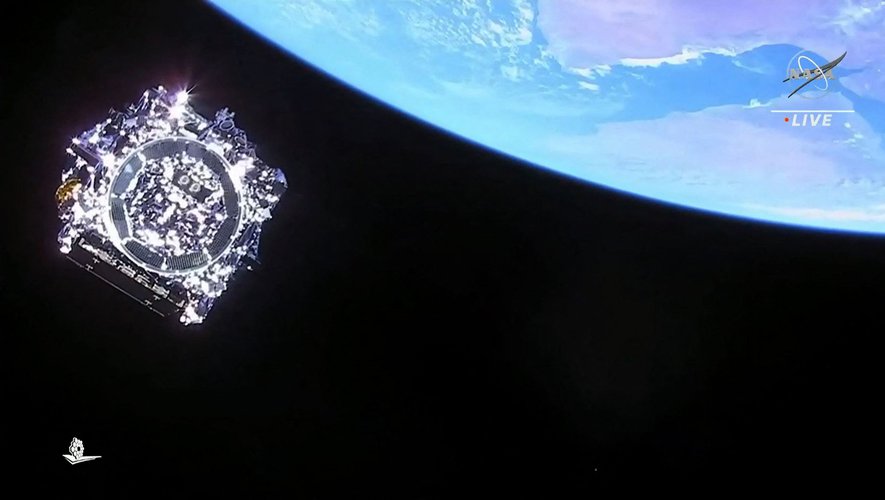
The powerful James Webb Space Telescope reveals its first images: Is life hiding somewhere in the universe?
This Tuesday, July 12, NASA will reveal the first images of the new James Webb Space Telescope. This is an extraordinary step forward for the scientific world, which is finally seeing the first results of many years of work. The observations will quickly move toward a small star system: TRAPPIST-1, perhaps, to contemplate the discovery of life in the universe.
Is enough ! The first images captured by the James Webb Space Telescope (JWST) arrive on Tuesday, July 12. Images that will amaze enthusiasts because their accuracy is revolutionary. This is an event that astronomers around the world have been waiting for for several years.
What will be the first images sent by the famous successor to the Hubble telescope? Galaxy? A cloud of cosmic dust? distant planets? The target was not disclosed by NASA and bets by the researchers.
The first shot of James Webb likely won’t show anything new, but it will show the power of the telescope. It has a huge mirror with a diameter of 6 meters, where the mirror of its older brother Hubble was only 2.4 meters. The goal will be to show the coolest images possible because according to Jeremy LoConte, a researcher at Purdue University, “NASA has invested a lot of money in this project, the general public should also be there.”
Read also:
Moon and Mars .. What are the next ambitions to conquer space?
long lasting function
JWST was launched into space on December 25 by an Ariane 5 rocket from the Kourou Space Center in French Guiana. The telescope then headed to an observation point 1.5 million kilometers from Earth, arriving at it on January 24. A particularly successful trip, it would allow James Webb to remain on probation for 20 years instead of the five years initially announced.
The James Webb Telescope performs observations in the infrared thanks to extremely powerful cameras, and straight from space. It will then be able to go far back into the universe’s past, shortly after the Big Bang, to see the first galaxies in the formation.
Read also:
James Webb Space Telescope: ‘I would like to be amazed,’ explains Olivier Bernet, an astrophysicist in Toulouse.
James Webb in search of life
A small portion of the sky is of particular interest to this new telescope. In the constellation Aquarius there is a red dwarf named TRAPPIST-1 with seven exoplanets (planets that do not revolve around the Sun) orbiting around it. “This system has the peculiarity of being very close to us, only 40 light-years away, and it’s tiny on the galactic scale,” explains Michael Gillon, a researcher at the University of Liège, who with his team discovered the TRAPPIST-1 system. Seven years ago.
Three to four planets from this system are in the “habitable zone of the star” which means that water in the liquid state can evolve. “This system has proven itself as James Webb’s best target, in terms of searching for exoplanets, it’s even the main one,” adds the astrophysicist. In fact, 25% of JWST’s time is devoted to studying exoplanets and 11% of that time is specifically devoted to TRAPPIST-1.
Read also:
Holidays 2022: Planets, stars, supermoon, Perseids… Where and when to watch the sky this summer?
The main task of the James Webb Telescope is to analyze the presence or absence of the atmosphere on the planets of the TRAPPIST-1 system. “We hope that at the end of the first cycle of observation (between now and the end of 2023) we will have the first answers to our questions,” the scientist specifies. The existence of the atmosphere is necessary for the development of life on a planet. If there is an atmosphere for one or more planets, JWST will analyze their composition.
The results aren’t there yet, but the scientific world is reeling from this great leap forward, and the hope of answering some of humanity’s biggest questions lies in the images and data this all-new telescope provides.

“Incurable web evangelist. Hipster-friendly gamer. Award-winning entrepreneur. Falls down a lot.”
